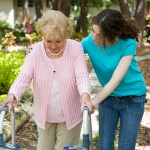“He is the best physician who is most ingenious inspirer of hope.” – Samuel Taylor Coleridge.
Your high school student has always wanted to be doctor, physical therapist, or a dentist. What guidance can you offer to help prepare for a pre-health program in college? It is a complicated process! Let me suggest an approach for clarifying what your student’s interest is and where it may be leading; then how to further explore it, research it, and find a college and career in which it can be nurtured, expressed, and developed into a way to uniquely contribute to the world.
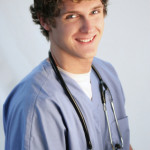
The population your student is drawn to help may influence the choice of an undergraduate major. Any major is acceptable, as long as he or she takes the pre-clinical sciences required by the AAMC. Determining the target population may help your son or daughter decide on a medical specialty, or even to pursue a different career path altogether (such as psychology, education, social work, or allied health sciences).
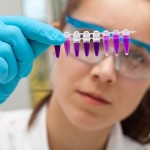
Inquire about your son or daughter’s medical interests at well-chosen moments, when he or she is in the mood to open up. Your adolescent may only be able to identify broad-brush areas now. However, the path to medicine is difficult, requiring mature, serious thought and focused planning. The earlier your teen can identify interests more specific than “I want to be a physician,” the earlier he or she can gain experience in those areas.

Perhaps your student is strong in math and science, but not sufficiently quantitative to excel taking the most rigorous route, such as undergraduate training in biomedical engineering, a GPA-buster if there ever was one for prospective medical students. A psychology undergraduate with excellent grades in the pre-clinical sciences can become a physician just as well as an engineer can (and there is so much biology and neuroscience in psychology today, geriatric psych majors like myself would not even recognize the field).
If your teenager is really saying, “I want to help people,” there are many “qualitative” helping fields, in education, counseling, and social work. Or if your son or daughter is proficient at math and science, but not geared for spending a decade competing in an intense academic environment, there are numerous rewarding, in-demand healing occupations not requiring such a long, competitive, expensive training track. Examples: Nurse, physician assistant, physical therapist, occupational therapist, medical technologist, nutritionist, athletic trainer, or alternative medicine practitioners like chiropractors or naturopathic professionals.
3. Create opportunities to explore a wide spectrum of medical interest areas. Pre-college programs can provide great academic exposure for exploration of interests, although these expensive programs are certainly not necessary for gaining acceptance at elite colleges. Brown University offers one of the best smoragasbords, in recent years offering such courses as So You Think You Want to Be a Doctor; The Body: An Introduction to Human Anatomy & Physiology; Stem Cells, Cloning & Regenerative Medicine; and Research Techniques in Biomedical Fields. Cornell Summer College also offers great programs, such as Biological Research and the Health Professions.
Enrichment programs can also offer exposure to real-life healthcare issues. The National Student Leadership Conference is a superb program held on college campuses throughout the country. It teaches a leadership process within a context of a content area (e.g., medicine, international relations, business, defense and intelligence, journalism and communications), with speakers and field trips, and facilitates team problem-solving in response to a simulated issue related to the content area. My own son participated in one of these programs years ago, and I was pleased with it on every level.
If your student is drawn to the “helping” side of medicine, there are plenty of opportunities to explore settings and populations. Encourage your teen to volunteer at a local hospital; get CPR and first aid training or even EMT licensing to serve on a first aid squad; help with a blood drive; or visit disabled veterans or seniors. Visit Web sites that match volunteer age, interests, and zip code to local needs. Good bets: Idealist.org; VolunteerMatch.org; Servenet.org; 1-800-Volunteer.org; YMCA; American Red Cross; and National Council of Jewish Women.
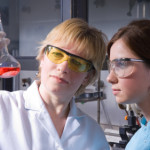
If you have a family contact in the research field, do not be shy about seeking out a shadowing or lab internship with that professional for your prospective pre-health student. Also check out Ultimate Guide to Summer Opportunities for Teens by Sandra Berger.
Academic enrichment, volunteer and research experiences are critical for helping your son or daughter do a “reality test” possible medical interests. Maybe your adolescent faints at the sight of blood, or is bored stiff isolated in a white-coat lab setting, or finds a hospital environment too traumatic, depressing, or smelly. These are all countra-indications for a medical career!
4. Research colleges and universities offering pre-health programs. A superlative resource is Steven Antonoff’s The College Finder and its partner Web site, CollegeXpress.com. Antonoff’s “Experts’ Choice” list of schools with excellent pre-med programs includes: Amherst, Bates, Brown, Bucknell, Carleton, Colgate,William & Mary, Emory, Franklin & Marshall, Grinnell, Hamilton, Johns Hopkins, Knox, Muhlenberg, Northwestern, Pomona, St. Louis U, St. Olaf, ,Stanford, U Chicago, U Penn, Vanderbilt, Washington U in St. Louis. More “usual suspects” are on the “Honorable Mention” list. It is especially important that the school (and major) be a good fit academically, and not impossibly rigorous or competitive for that student’s skill level, such that the undergraduate can maximize GPA. It is also critical that the school’s pre-med advising is user-friendly, proactive, nurturing, and reputed to be highly informative and helpful.

Obviously, it would be nice for your student to know where he or she is going to medical or dental school at age eighteen. But it is a complex decision to make as a high school senior. Here is the countervailing logic:


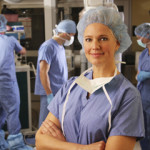
Related reading: Planning a Career in Medicine: Discover If a Medical Career Is Right for You and How to Make It Happen by Stephen Nelson, Becoming a Physician: A Practical and Creative Guide to Planning a Career in Medicine by Jennifer Danek, The Ultimate Guide to Choosing a Medical Specialty by Brian Freeman MD, and Med School Confidential: A Complete Guide to the Medical School Experience: By Students, For Students by Robert H. Miller.
